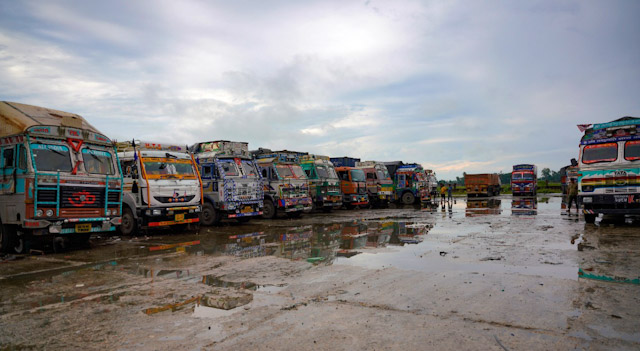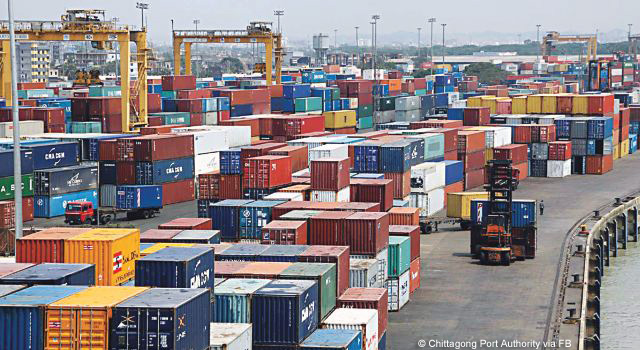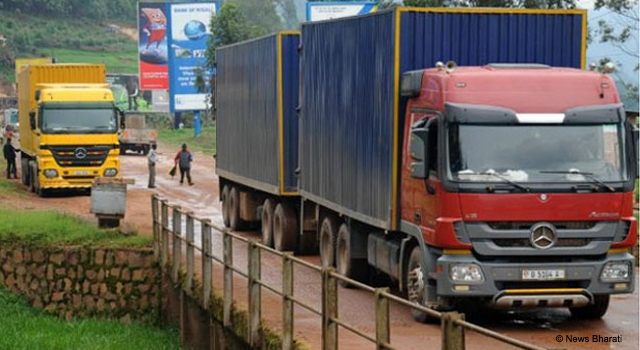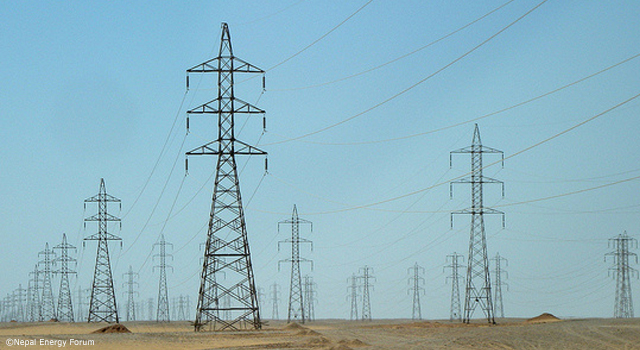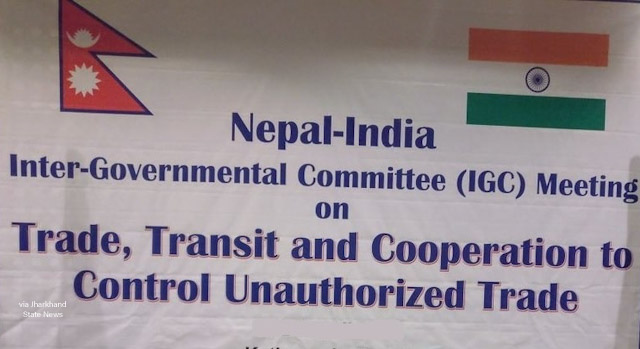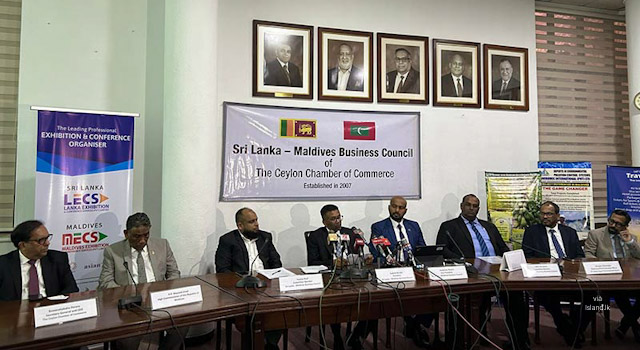
Commentary: A Framework for Enhanced Trade Facilitation in the Bay of Bengal Region
29 September 2022
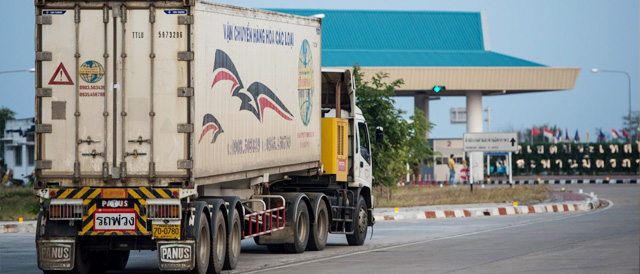
Promote remote processing of cargo clearances and modernize border facilities to improve intraregional trade in BIMSTEC. This article appears on Development Asia.
A Framework for Enhanced Trade Facilitation in the Bay of Bengal Region
By Dongxiang Li, Anthony Bayley, Lani Garnace
The coronavirus disease (COVID-19) pandemic has been one of the most pressing constraints to trade since early 2020. This is largely due to various measures taken by countries to contain the disease. Mass vaccinations have not prevented new COVID-19 variants from emerging, indicating that residual restrictions will remain until the end of 2022 and, even possibly, the whole of 2023.
Supply backlogs and the gradual reopening of economies have led to a dramatic spike in demand while transport was still constrained. Shipping and airlines had understandably cut back on their services during the lull in economic activities. The sudden resumption in transport demand amid limited services resulted in a surge in both international sea and airfreight rates. This has led to supply shortages and disruptions in global value chains.
In the Bay of Bengal region, the combination of constrained production, port congestion, and distribution issues adversely affected the movement of trade between countries. This situation calls for new approaches and technologies that can help sustain trade and limit the negative effects of a changing environment.
The Bay of Bengal Initiative for Multi Sectoral Technical and Economic Cooperation (BIMSTEC), a regional multilateral organization that harnesses shared and accelerated growth through cooperation in areas of common interest like trade, is adopting a new strategic framework to address perennial trade facilitation constraints and the adverse effects of the pandemic.
For BIMSTEC to become a more peaceful, prosperous, and sustainable region, the efficient movement of international freight passing through land, sea, and air borders must be prioritized. Application of advanced international best practices in cargo clearance processing, such as "process distancing," combined with supporting investment in border and inland clearance facilities must be implemented.
Trade Facilitation Constraints in the Region
Comprising five member states from South Asia—Bangladesh, Bhutan, India, Nepal, and Sri Lanka, and two from Southeast Asia—Myanmar and Thailand, BIMSTEC has identified trade as one of seven cooperation sectors, given its important role in national and regional economic growth. However, in 2020, intra-BIMSTEC trade only represented 6.15% of member countries’ total trade. In comparison, approximately 23% of trade in the Association of Southeast Asian Nations (ASEAN) region was between its members. This suggests the potential for increased intraregional trade in BIMSTEC. However, the COVID-19 pandemic has resulted in a temporary downturn in trade in the region. It also exposed many areas for improvement:
Soft infrastructure
- The cargo clearance processes still require high levels of face-to-face contact between border authorities and brokers, resulting in clearance delays and increased corruption risks.
- Automated and manual processing often operate in parallel with duplication, thus resulting in extended processing times.
- Excessive clearance documentation requirements often result in delays in lodging submissions due to additional times required to collect and collate various documents.
- Limited use of risk management applications results in increased inspection and examination levels.
- Lack of pre-arrival processing means clearance documentation may only be submitted after the physical arrival of the goods.
- Implementation and compliance with international agreements/conventions vary.
- There is limited use of inland transit systems, thus increasing the risk of congestion at the borders.
- There is often poor institutional cooperation between the various clearance authorities.
- Reliance on outdated customs legislation can inhibit the introduction of automated applications and advanced processing practices.
- Lack of mutual recognition agreements between member states leads to an increased demand for product testing and approvals.
- Performance monitoring to measure improvements in border dwell times is limited.
Hard Infrastructure
- The land border infrastructure, especially at secondary borders, needs to be further developed.
- Additional inland container and clearance depots can reduce congestion at border and port terminals.
- There is a shortage of land or dry ports and off-dock container freight stations to move goods rapidly through land border crossings and port terminals.
- The region lacks sufficient test laboratories and information technology linkages to borders, leading to delays in the movement of perishable products and consumer goods.
Trade Logistics
- Clearance delays affect the reliability of global value chain operations.
- There are potential problems in adapting traditional clearance procedures to new logistical applications and changes in international trading methodologies.
- Constraints in linking national single windows to port community systems need to be resolved to avoid duplication of data entries.
- Modern or advanced logistics in most BIMSTEC countries lag in meeting global standards, with only Thailand (32nd), India (44th), and Sri Lanka (94th) appearing in the top 100 countries in the 2018 World Bank Logistics Performance Index of 160 countries.
Institution and Capacity Building
- Duplication of processing arises due to constraints in staffing skills and traditional attitudes.
- Human resources constraints include problems in skill upgrading, staff retention, and high staff turnover.
- Competition from the private sector leads to a shortage of experienced information technology personnel.
- Cooperation between the different trade facilitation authorities in member states is limited.
Implementing a Strategic Trade Facilitation Framework
BIMSTEC countries must comply with international trade facilitation agreements, incorporating increased levels of automation, expansion of infrastructure to support expedited border transit times, and promotion of enhanced cooperation and coordination between member states.
Promote Remote Processing of Customs Clearances
Modern border processing is designed around the concept of minimizing the interface between customs and other border agencies and the wider trading community, including their clearing agents. "Process distancing" or undertaking clearance activities predominantly online, reduces the demand for face-to-face contact between parties.
To improve the soft infrastructure component, BIMSTEC countries must carry out these tasks:
- Increase the implementation of remote processing and clearance techniques to limit the need for face-to-face contact between parties.
- Implement national single window schemes by 2030 and trade information portals by 2025.
- Reduce the documentary requirements for clearance by 2025 to less than six core import or export documents.
- Increase the percentage of green channel (no inspection) shipments, reduce the level of physical examination, and enhance post-audit capabilities and advanced-ruling capacities.
- Allow pre-arrival processing in all member states by 2025.
- Fully implement the Trade Facilitation Agreement (TFA), the Revised Kyoto Convention, and the SAFE Framework by 2030.
- Increase the percentage of shipments cleared inland from the borders or ports.
- Increase the participation of the private sector in national trade facilitation committees.
- Review customs laws every 10 years and update if these are not compliant with international agreements and best practices.
- Increase by 50% the mutual recognition agreements between BIMSTEC member states by 2025 and 100% by 2030.
Invest in Border and Inland Clearance Facilities
Resolving the various soft infrastructure constraints are critical to enhancing trade facilitation, but this must be complemented by investment in hard infrastructure:
- Modernize all the primary land borders completed by 2025 and the main supporting secondary borders by 2030.
- Increase the number of customs-approved inland clearance depots.
- Increase the availability of adjacent land ports or integrated check posts supporting primary land borders by 2030.
- Increase the availability of off-dock container freight stations supporting all major seaports handling containers.
- Increase the number of testing laboratories and establish more online links between the laboratories and main borders by 2025.
Build a flexible trade logistics system
External pressures will lead to changes in the way international trade will be conducted. Trade facilitation in the BIMSTEC region must have adjustment mechanisms to avoid the creation of new non-tariff barriers:
- Develop and adapt trade facilitation practices to be aligned with advanced logistical systems and application of new trading terms.
- Build community systems or equivalents linked to national single windows by 2030 at all major BIMSTEC ports.
Upskill and Reskill Border Officials
The trade facilitation demands of the global trading community are expected to change significantly over the next decade, as will how border agencies respond to these evolving demands. This will require the introduction of, or a more widespread application of, advanced processing and procedures, supported by even higher levels of automation.
The traditional roles and working practices of customs officers and other border officials will also likely need to adjust. The primary role of the border agencies will increasingly be as “trade facilitators” rather than solely border controllers and revenue collectors. New approaches to processing and procedures will require institutional and capacity building programs to implement them.
Recommended actions are
- Promote active cooperation between regional trade facilitation initiatives,
- Leverage assistance in capacity building through cooperation between partner agencies, combined with additional support from international organizations, and
- Increase the number of technical training courses for trade facilitation personnel to raise the overall level of professionalism of border personnel.
Policy Implications
A strategic intraregional trade facilitation framework requires country ownership; results-orientation combined with pragmatism; flexibility and responsiveness to country needs; reform and modernization; active participation and involvement of the private sector; partnerships with development partners; and overall cooperation.
It should primarily be funded by the internal resources of BIMSTEC member states, supplemented by bilateral and multilateral resources as deemed appropriate. These resources can also assist in helping the private sector to become active partners in implementing future trade facilitation initiatives.
BIMSTEC's increased engagement with international development partners can also help mobilize resources needed for implementing key elements of the strategy and assist the BIMSTEC Secretariat in program coordination and monitoring of its successful implementation.



